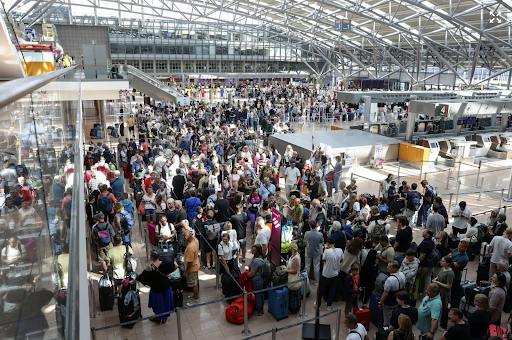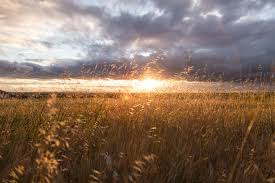The Winter Blues

An adult works in front of a light box to combat SAD.
Every year, I apprehensively await the start of fall. Don’t get me wrong, I love the beautiful colors of the changing leaves, but I miss basking in the summer sun, letting my skin soak up every ray. Every fall, the clock turns back, and the sun abandons me earlier and earlier. As a result, my cells are deprived of warmth and light, leaving me in a slump. I might as well admit: I am a victim of seasonal depression.
It has been a battle that I brace myself for every year. The sadness, anxiety, emptiness, lack of energy, depressive episodes, and tiredness. “I am overwhelmed, drowning in the darkness and cold outside,” said Rosie Reale ‘24. SAD, or seasonal affective disorder, is a type of depression that is triggered by a change in seasons. It usually starts in fall and gets worse in winter before spring comes. Many people claim to have the “winter blues,” which is a much milder version of SAD. According to Cleveland Clinic, five percent of adults in America experience seasonal depression every year, and out of that group, 75 percent are women. In general, 10 to 20 percent of Americans experience the winter blues.
So what causes seasonal depression? There’s a variety of causes for the winter blues. Lovey Moore ‘24 said: “I definitely feel the winter blues coming on when the days get shorter and the sun sets earlier. I can’t do outdoor athletics and a lot of the activities that make me happy.” What Lovey is talking about is a biological clock change. When someone has been exposed to less sunlight, their internal clock changes, and with that comes sleep, hormone, and mood changes. Another cause of SAD is brain chemical imbalance. The chemical serotonin helps to regulate happiness; sunlight and vitamin D help to regulate this chemical. The winter lack of sunlight, which normally triggers vitamin D synthesis, can make one’s mood worse. A vitamin D deficiency and a melatonin increase (which increases sleepiness and sluggishness) also contribute to seasonal depression.
Over the years, I have developed an armory of tools and tricks to fight the enemy. I have found light therapy to be very helpful. A lightbox mimics the sun’s light and helps to regulate serotonin and melatonin production, leaving you with more energy and a better mood. For very serious SAD, an antidepressant can be prescribed along with CBT. CBT, or Cognitive Behavioral Therapy, is a type of talk therapy that effectively treats SAD. According to Cleveland Clinic, CBT is the most effective and long-lasting treatment approach. But in general, spending as much time outdoors as possible and taking vitamin D supplements are very simple things to treat and prevent seasonal depression. An occasional massage or visit to the acupuncturist are other ways that I find relief.
This article was supposed to be finished in a day or two, but like most of my homework assignments, it has been left aside for days, even weeks. Why? Winter depression. Sure, I have my techniques and coping mechanisms, but no one is perfect (especially me). Dealing with the winter blues can be a struggle, but with some effort and good faith, it gets better. Making sure you listen to what your body needs is an important thing, even if it means cutting corners on assignments to go to bed a little earlier. So eat a good breakfast, get some fresh air, and laugh with friends. Know that your teachers, family, and friends are there for you, so never be afraid to ask for help.
Links to SAD Treatments
LightBox: https://www.health.com/depression/best-light-therapy-boxes
Vitamin D supplements: https://www.healthline.com/nutrition/best-vitamin-d-supplements#A-quick-look-at-the-best-vitamin-D-supplements-
by Cecilia Ashenuga ’24, Food and Wellness Editor









